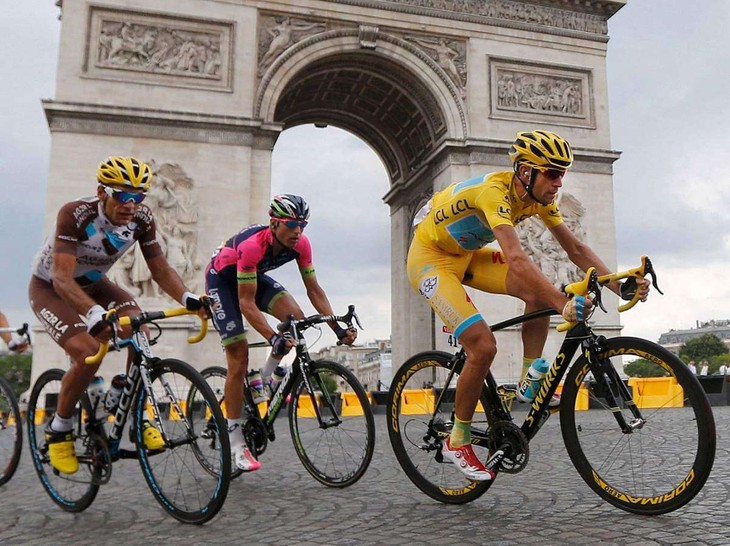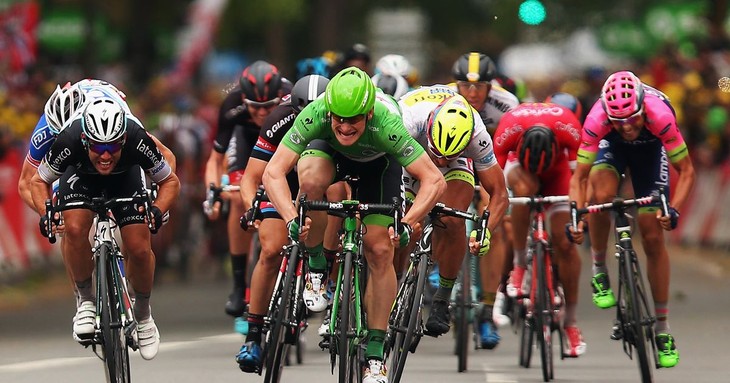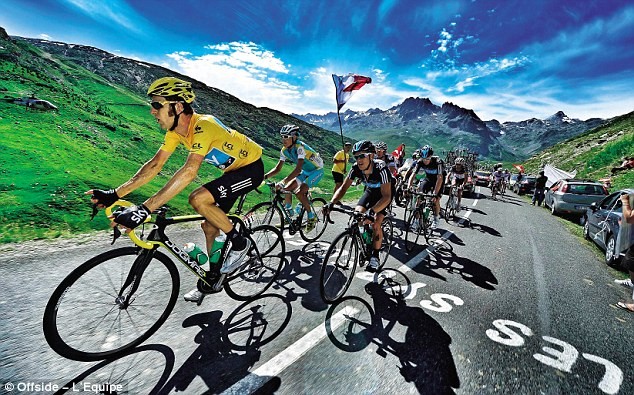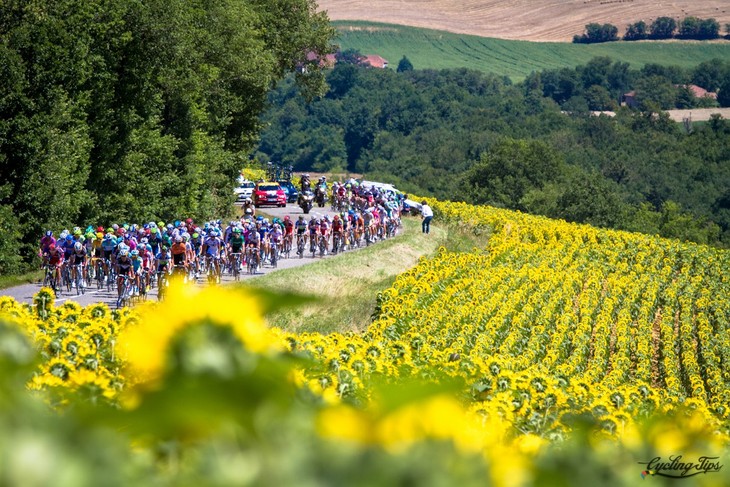(VOVworld) - As the most watched and publicized bike race in the world, the Tour de France is one of the most famous races. Having provoked a mixture of astonishment and admiration, the Tour de France won over the sporting public and the roadside crowds swelled. The French people took this annual event to their hearts which placed their towns, their countryside, and their mountains, in the spotlight. Let’s join VOV’s talk with Yoan Guyon from France to discover the Tour de France- What is it all about?
 |
The Tour de France 2015 takes place from July 4-26 (Photo: toudefrance2015.org)
|
Q: Hello Yoan Guyon and thank you for being with us today! Can you briefly describe the origins of the Tour de France?
A: The Tour de France is an international event, I mean, internationally famous. The first edition of this international race was in 1903 so it’s been more than a hundred years ago. It has happened every year except during the two WWs that have been in France, so, between 14 and 18, and between 39 and 45, there was no Tour de France. It’s an annual multiple stage race that occurs in July in France and at the beginning it’s only French riders but little by little the event became more and more famous and some international riders joined the Tour de France to participate with international teams. There are, now, around 20 teams, that gather the best riders in the world. And you have also some events which are similar in Italy and in Spain which are named the Giro d'Italia and La Vuelta a España. Every year the path changes, but we have some usual steps which are the Alps and the Pyrenees climbing, some mountains that make the border between the France and Italy and France and Spain. And the arrival comes in Paris on the Champ Elysees. And the last step on the last day happens in Paris for several awards for the last step which is like the big arrival and the big ceremony.
Q: How long does it take place? Can you tell us some rules?
A: The Tour de France takes place over 20 or 21 days. The riders, the people who cycle, they cycle around 3,500 kilometers in total. And every day you have what we call a step, a stage, which is a few hundred kilometers every day. Some days are made for the riders to get a rest. But they almost ride every day.
The race winner is the one who spends, who completes, the full race with the lowest time. So every day when you have one step, every rider must finish the step from the beginning and drive a few hundred kilometers and we record the time and at the end of every day, you have the general classification winner, which is the one who each day wears the yellow jersey. Also, we have as printer classification; it’s the one who wear the green jersey. We have the climbers for the guy who climbs the best, or the fastest, on the mountain steps. And those guys, the best climbers, wear a polka-dot, red dot, T-shirt. And we also have a white T-shirt, for the youngest rider, the best young rider under 26 years old. And also a team classification for the team who has the best runners. And each team has 9 riders.
 |
Tour de France 2015: Mark Cavendish denied win on stage five despite valiant fight back from crash (Photo: mirror.co.uk)
|
Q: Can you name some famous riders?
A: The best riders in the history of the sport were 5 guys who won 9 times, Jacques Anquetil, Bernard Hinault who are French, and you have Miguel Indurain and Eddy Merckx. One of the most famous guys is the American Lance Armstrong who won 7 times. But it appeared after a few years that he cheated all 7 times and he was disqualified and banned from any sport competition after that and finally he lost his 7 titles. So in the history, there is a whole 7 years where we had no winner in the Tour de France because Lance Armstrong cheated.
Q: Cheated? How could they?
A: He’s not the only one. It’s a common thing. Every year, the winner of The Tour de France and even, we can say the first 10 are suspected of doping. They are each year stronger and stronger, they go faster and faster each year, past the ability of the human body and a lot of people think that this is not humanly feasible to ride so much over such a distance, 3,500 km, that quick. Some runners run around 40 km in average for 2 weeks, in the mountains, on the slopes or on the flat. It’s humanly very difficult to do.
This race is now not taken so seriously and people start to leave stop watching. Because of the doping problem, the most famous doping trick in this competition was the EPO, and also blood transfusions, which are done by the riders to get more oxygen capacity in the blood. So during the race, they take some new blood and they put this new blood in their body to have a better capacity and the ability to ride faster. And this is of course cheating.
Q: Well, it takes a lot of time and effort and strength, so does the race is only for men?
A: A few days before, you have some other races. I think there’s also the Tour de France for the women. Last year, the Tour de France for women came one day before The Tour de France for men. And you have all the TV so it’s a very big event and a lot of sponsors.
 |
The Yellow Jersey Final Week Tour for amateur cyclists
(Photo: bicycle-touring-guide.com)
|
Q: Have you ever participated in a race? Has it ever passed your town?
A: Oh yes, the Tour de France passed in my town and I went to see it. Yeah some people doing cycling and it was more about the atmosphere, everybody gathering there to look and you may know some of the riders because a few of them are famous, but most of them are not famous at all. You support everybody and you shout “Allez! Go! Go!Allez! Go!”. And that’s pretty funny. And you have all the organization also that comes before and after. So it’s like, very big, they have a lot of gifts that they throw to the people who are watching. They throw some gifts, some hats, some food, and some bottle of beers.
 |
A beautiful shot when cyclists raced through a sunflower garden (Photo: cyclingtips.com)
|
Q: So what do you think it would help to promote your country’s image?
A: It’s an annual event. It’s on TV, so it’s good if you want to show your village. Because the TV organization not only doesn’t only film the race but also all the countryside that is around. And on TV, during the 3 weeks, you have the race but they will not only film people cycling for hours. They also make documentaries about the villages, the castles, and look at the history of the province. So it’s really good for the villages that they pass through. And there is also competition from foreign countries because the The Tour de France has now started one or two stages in other surrounding countries. So for example, one year, I think it started in London and then they came to France. Once they started in Netherlands, in Belgium. I think Germany already, the Spain, Italy. So it’s quite a new trend to start The Tour de France from other country and then they continue the ride in France and they keep going around France.
Q: Thank you for joining us today. And that has been Yoan Guyon on Cultural Rendezvous. Goodbye until next time!